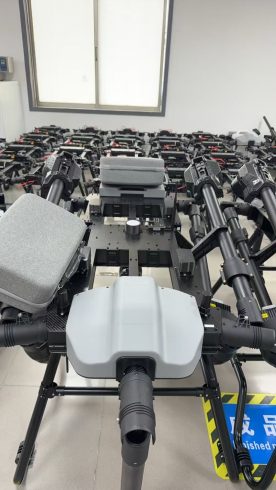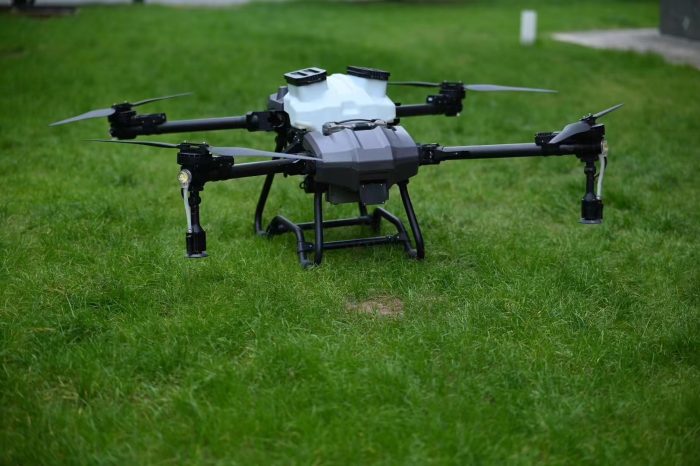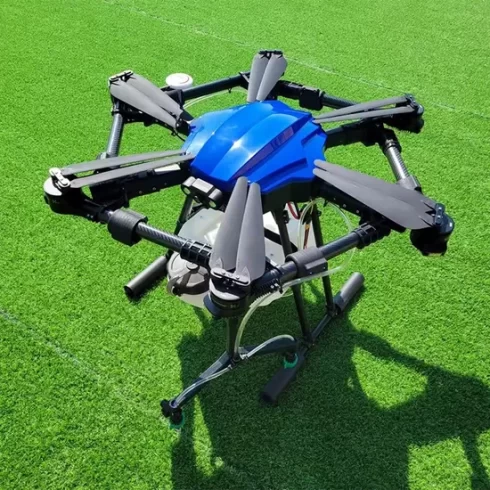![图片[1]-Using Drones for Corn Spraying: Precision, Efficiency, and Scalability in Modern Agriculture-msoen](https://www.msoen.com/wp-content/uploads/2025/04/4e0d9ec2ca214327-576x1024.jpg)
Corn cultivation, a cornerstone of global agriculture, faces intensifying challenges such as labor shortages, rising input costs, and the need for sustainable practices. Traditional methods of pesticide and fertilizer application in vast cornfields are time-consuming, inconsistent, and prone to environmental harm. Drones for corn spraying are emerging as a transformative solution, offering precision, speed, and adaptability to meet the demands of modern farming. This article explores how drone technology is revolutionizing cornfield management, its unique advantages, and the key considerations for farmers.
Why Cornfields Need Drone Spraying
Cornfields are often sprawling, uneven, and densely planted, creating logistical hurdles for tractors or manual sprayers. Additionally, corn’s rapid growth cycles demand timely interventions to combat pests, diseases, and nutrient deficiencies. Drones address these challenges by:
- Accessing Wide Areas: Covering hundreds of hectares in hours, bypassing terrain obstacles.
- Targeted Application: Reducing chemical waste through precision targeting.
- Timely Interventions: Enabling rapid responses to pest outbreaks or weather-related stress.
Key Features of Corn-Optimized Drone Sprayers
- Adaptation to High-Stalk Crops
Corn’s tall, dense canopy requires drones with:
- Height Adjustment Sensors: Automatically adjust flight altitude (2–10 meters) to navigate crop density.
- Obstacle Avoidance: LiDAR and cameras detect stalks, branches, or irrigation equipment to prevent collisions.
- Penetrating Spray Technology: Air-assisted nozzles ensure chemicals reach lower canopy layers.
- Precision Spraying Systems
- Variable Rate Control: Sync spray output with real-time data on pest hotspots or soil moisture.
- Multi-Spectral Imaging: Identify stressed areas using NDVI maps, targeting interventions only where needed.
- Anti-Drift Nozzles: Minimize chemical drift to protect neighboring fields and waterways.
- AI-Driven Analytics
Advanced drones integrate AI to enhance decision-making:
- Pest Detection: Algorithms analyze imagery to spot corn borers, rust, or aphid infestations.
- Yield Prediction: Machine learning models correlate spray patterns with yield data for future optimization.
- Swarm Coordination: Fleets of drones automate spraying across large-scale farms.
- Extended Flight Time and Power
- 80–120 Minute Flight Time: Covers 10–15 hectares per charge, ideal for time-sensitive tasks.
- Fast-Swap Battery Packs: Enable uninterrupted spraying during critical growth stages.
- Solar-Compatible Designs: Extend uptime in remote fields.
Benefits of Drone Spraying in Corn Farming
- Reduced Chemical Usage
Targeted application cuts pesticide use by 30–50%, lowering costs and environmental impact. - Labor Efficiency
Replace manual crews with drone operators, saving time and reducing health risks from chemical exposure. - Higher Yields
Timely pest and disease control protect corn yields, boosting productivity by up to 20%. - Compliance and Sustainability
- Meet strict regulations on chemical runoff and water quality.
- Align with sustainability goals (e.g., UN SDG 12: Responsible Consumption).
Application Scenarios in Corn Cultivation
- Early Growth Stages
Monitor seedling health and apply starter fertilizers uniformly across wide fields. - Vegetative Phase
Target foliar diseases like northern corn leaf blight with AI-detected hotspots. - Pre-Tasseling
Control weeds and pests without damaging critical reproductive structures.
Future Trends in Corn Drone Technology
- AI-Powered Autonomy: Drones that autonomously map fields, detect issues, and adjust sprays in real time.
- Hydrogen Fuel Cells: Extend flight times to 4+ hours for marathon spraying sessions.
- Blockchain Integration: Track chemical usage and harvest quality for premium market access.
Implementing Drone Sprayers: A Checklist
- Assess field size, crop rotation practices, and pest history.
- Choose drones with height-adjustable nozzles, obstacle avoidance, and AI analytics.
- Train operators on software for geo-fencing and variable-rate spraying.
- Partner with local regulators to ensure compliance with pesticide guidelines.
Conclusion
Drones for corn spraying are redefining efficiency and sustainability in large-scale agriculture. By combining precision, scalability, and adaptability, these technologies empower farmers to tackle labor challenges, optimize inputs, and protect yields. As AI and renewable energy innovations advance, drone sprayers will become indispensable tools for feeding a growing population while preserving natural resources.
Key Takeaways:
- Corn-specific drones excel in dense, tall canopies with height adjustment and penetrating spray tech.
- AI-driven features optimize chemical use, reduce labor, and boost yields.
- Future advancements like hydrogen fuel cells will enhance endurance and scalability.
Investing in drone sprayers for cornfields is a strategic leap toward smarter, sustainable farming—one where every drop of pesticide and every ear of corn is optimized for maximum impact.









暂无评论内容